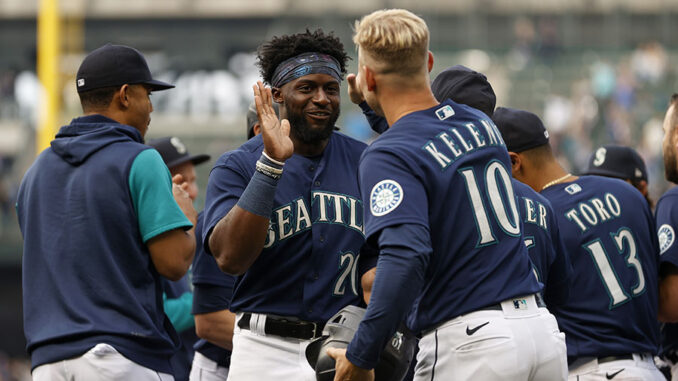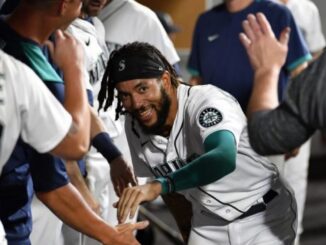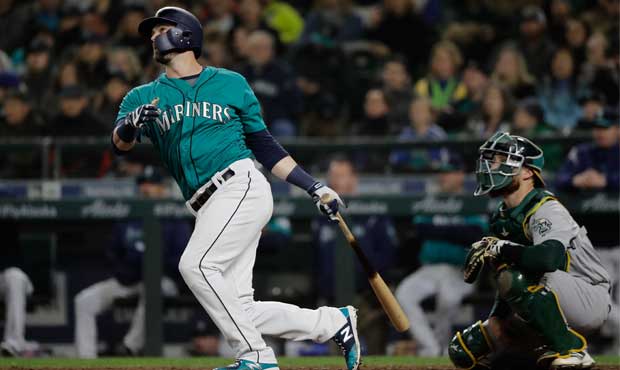
Coming into an offseason in which they had made the playoffs for the first time in over 20 years, the Seattle Mariners appear to have built a core worth being excited about.
Rookie of the year winner Julio Rodriguez signed a club-friendly contract extension during the season, as did mid-season ace pitching acquisition Luis Castillo. Outside of those two players, the only members of the roster with significant long-term guaranteed salaries are starting pitcher Robbie Ray, who signed a 5-year $115 million contract last offseason, Eugenio Suarez and Marco Gonzales, who both have contracts that expire after 2024, and shortstop JP Crawford, whose contract extension pays him around $11 million per season through 2026. With a mid-range payroll and several apparent holes needing upgrades, it was assumed the Mariners would get involved in free agency to some degree, even if it didn’t mean landing a superstar. Instead, the Mariners sat on their hands.
As of January 1, the Mariners spent a total of $1.2 million on major league free agents, less even than the notoriously cheap Oakland Athletics and Pittsburgh Pirates. It is, in fact, the least amount spent by any major league team this offseason.
What to make of the Mariners’ offseason? Did they not find a deal that suited them? Did the ownership group choose to spend the money on new yachts? Or is it something else?
To be fair to the Mariners’ ownership and front office, it is well known that simply dropping gobs of cash does not guarantee a team a title. If that were the case, the Yankees and Dodgers would have many more, and the New York Mets would already be planning their 2023 championship parade. Most mid-market teams try to build up a core of young, cheap players through drafting or trades and then use free agency to fill holes around those pieces.
Mariners President of Baseball Operations Jerry DiPoto said this is what the Mariners try to do.
“We use free agency in a way to augment our roster, not in a way to build it,” Dipoto said at the winter meetings, a traditional hot spot for trades and free agent signings.
The Mariners came into the offseason spot with several spots that either needed to be filled or upgraded, including middle infield, both corner outfield spots, and designated hitter. They did take steps at both of them, acquiring Kolton Wong in a trade with the Brewers to replace Adam Frazier at second base and acquiring former all-star Toscar Hernandez in a trade with the Blue Jays to replace Mitch Haniger in the outfield. Just a few days into the new year, they did make a small move, signing outfielder AJ Pollock to a one-year $7.5 million contract. That contract is the biggest contract the Mariners have given to a free-agent position player during Dipoto’s tenure, topping the one-year, $5.5 million contract given to Nori Aoki in 2015.
Pollock figures to platoon in a corner outfield spot and potentially sees time as designated hitter.
In terms of making a big splash with a dramatic upgrade, the ship has probably sailed on all fronts. Most of the big names are off the board, and the Mariners depleted the upper portion of their farm system in the deal for Castillo last summer, meaning that while they can certainly still swing a trade, any trading partner will likely have to accept prospects that are further away from contributing at the major league level.
Outside of Julio Rodriguez and Toscar Hernandez, the team’s outfield mix currently features Pollock, Taylor Trammel, and Jarred Kellenic, both of whom have tantalizing skills but have yet to break through at the big league level. Sam Haggerty and Dylan Moore, who also backup the infield, saw time in the outfield last year and could again next season. From a pure body count perspective, the Mariners have plenty of good options, although the quality is definitely a concern.
The biggest gap the Mariners can fill before spring training opens is designated hitter. It’s also the easiest, which is why the team may be waiting. There are a few options out there, and even if they don’t pop off the screen, they would still provide an upgrade on what the Mariners have in-house. One option could have been a reunion with 41-year-old Nelson Cruz, but Wednesday, he signed a one-year deal with the San Diego Padres. A significantly younger choice, at just age 30, also coming off a rough 2022, could be Trey Mancini, who won comeback player of the year in 2021 after recovering from cancer and has a lengthy track record of putting up solid on-base numbers while hitting for power. He could also help spell Ty France at first base after France faded severely toward the end of the 2022 season. Andrew McCutcheon could be another option. A former star centerfielder, his best fielding days are behind him, but he could still contribute at the corner outfield spots in a pinch. While he doesn’t provide the power or on-base skills of someone like Mancini or Cruz, he could give the Mariners more coverage in the outfield.
None of those options are exactly inspiring, but at this point in the offseason, those are the options that are left. At this point, the Mariners may not need something splashy. If additions help lengthen the team’s bench and bolster the offense in any shape, it should be counted as a win. The team will already be boasting one of the best pitching staffs in baseball, on paper at least, so if the offense can do anything above hitting its way out of a wet paper bag, the Mariners should be able to compete for a wild card spot, if not the American League West.
If they do that, the ownership group can say they have a winning ball club – and still be able to afford their new yachts to boot.




